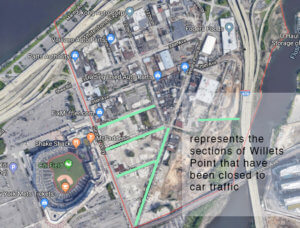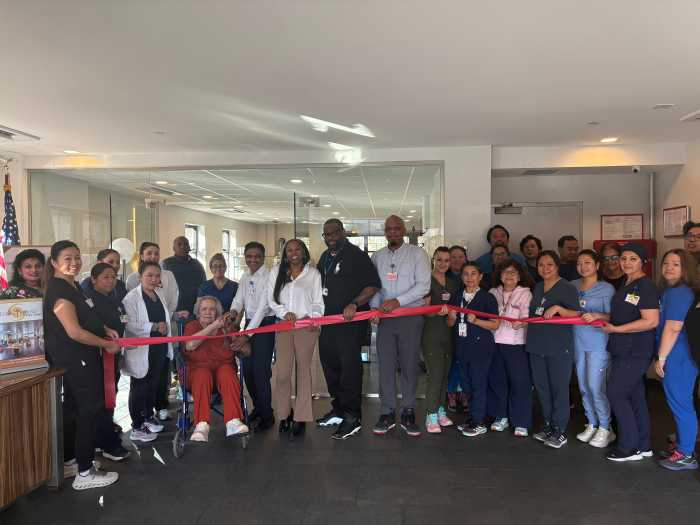At a meeting on Wednesday night about the progress of the Willets Point Development between the city and the Flushing community board, a group of auto workers showed up to make sure they weren’t left behind in the aftermath.
The meeting was designed to be a progress report centered on environmental concerns. The Economic Development Corporation (EDC), the group overseeing the mega-project, presented its preliminary studies on the level of pollution in the area of the industrial zone that the city bought, which is known to have a long history of toxic dumping.
But workers who remain in Willets Point have begun to suffer as a side effect of this cleanup work. In coordination with these studies, the EDC de-mapped portions of the southern part of the neighborhood and erected gates that block off all major roads to the area including Willets Point Boulevard, 36th, 37th and 38th avenues.
After the EDC presented at the meeting, three different Willets Point auto workers raised concerns that the gates are choking off their business and putting them in peril by blocking off ambulances in the case of an emergency.
“The key problem is that all the displaced shops are now clogging the streets. All the poor shops that are now at the bottom of Willets Point [Boulevard], are starving,” said Sam Sambucci a community board member and auto shop owner on Willets Point Boulevard.

During the EDC presentation on their progress under the Brownfield Cleanup program, the state’s regulatory environmental purification framework, engineering consultant Gerald Nicholls, said that the initial results were promising. They found what they expected to find, namely petroleum contamination in soil and groundwater, which he said is relatively easy to clean up.
But decontamination will be time-consuming. Nicholls estimated it would be another two years before the agency could break ground on the construction of the first batch of affordable housing–and that’s just covers about a third of the land that the city owns.
After EDC finished the presentation, which made clear that it planned to keep the gates up for years, three workers testified about their effects. Arturo Oyala, an auto worker who lost his shop over the last few years and was forced to work from a mobile shop, said that he’s struggling to get by.
A lawyer representing of the Sunrise Cooperative, a group of mechanics and auto-body shops in Willets Point who negotiated for subsidies in 2014 after the city took over their properties, also spoke on the hardships that the group had recently endured as a result of the gates.
“We understand that the area is going to get developed. We’ve been talking about it for 15 years–before I was there. Either or develop it or figure it out. But while we’re here you need to take care of the people,” said Sambucci.
Eleni Bourinaris, a representative for the EDC, responded responded to the complaints that the roads were de-mapped and blocked off in order to complete the remediation process. The agency would have to coordinate with the Department of Transportation in order to turn them back into functioning streets.
Community Board 7 Vice Chairman Chuck Apelian weighed in to say that something needs to be done to help the workers.
“It’s not a technicality whether it’s a road or it’s not a road, I think we need to have some kind of relief access [sic] on the 30 foot-wide strip right at that key ‘V’ intersection. I think that’s a smart idea. So we’ll talk about that,” said Apelian. He then insisted on adjourning the meeting so that he and the EDC representatives could have this conversation outside of the context of the public meeting.
Asked about its plan to respond to the complaints of the auto workers in the wake of the meeting, an EDC spokesperson said that “we take the concerns raised very seriously,” but neglected to propose or commit to any plan of action.




































